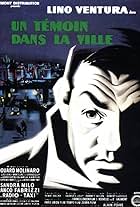Young Tokiko works at a geisha house as a maid, waiting for her maiko practice (apprenticeship of geisha) to begin. The movie depicts detailed lifestyle of geishas at that time, showing thei... Read allYoung Tokiko works at a geisha house as a maid, waiting for her maiko practice (apprenticeship of geisha) to begin. The movie depicts detailed lifestyle of geishas at that time, showing their rules, loves, beauties and humanities.Young Tokiko works at a geisha house as a maid, waiting for her maiko practice (apprenticeship of geisha) to begin. The movie depicts detailed lifestyle of geishas at that time, showing their rules, loves, beauties and humanities.
- Awards
- 9 wins & 9 nominations total
Sumiko Fuji
- Satoe
- (as Junko Fuji)
- Director
- Writer
- All cast & crew
- Production, box office & more at IMDbPro
Featured reviews
Omocha is a fascinating look at the world of the Geisha in Japan at a critical time in their history, the introduction of anti-prostitution laws in 1958. Cleverly directed, the film provides an intimate portrayal of the vibrancy of the Geisha culture, in terms of both its visual appeal and the sheer complexity of the social system that 'regulates' the Geisha's lives.
While it occasionally resorts to some lacklustre stereotyping, it's always well acted and intensely engaging. The film's basic story and premise is similar to the novel 'Memoirs of Geisha', but it is very much its own film, and raises a lot of questions about attitudes to women, sex, and women who sell sex, that still resonate strongly today.
While it occasionally resorts to some lacklustre stereotyping, it's always well acted and intensely engaging. The film's basic story and premise is similar to the novel 'Memoirs of Geisha', but it is very much its own film, and raises a lot of questions about attitudes to women, sex, and women who sell sex, that still resonate strongly today.
In my opinion there is no comparison of this movie to Memoirs of a Geisha. 2 different stories, 2 different ideas! I have studied the geisha culture for many years. Although I find the situations and acting farcical, the effort of getting seem like it could happen are spot on. The kimono and other attention to detail is perfect. The katsura (wigs), kimono, atmosphere of an okiya was exactly right.
Of course geisha would not behave in the manner that they have in this movie. They are much more disciplined and discreet. They would spend many hours practising their lessons of dance, music, etc. They are not prostitutes and never have been, so therefore having sex in an ochaya (tea house) is extremely unlikely to happen. Also the practise of mizuage wasn't correct in this film. It did happen, no longer happens, but did not occur just after a girl became a maiko. It usually took place a couple of years into her apprenticeship. And 3 million yen is pretty excessive even for a very wealthy man to spend on just any old maiko.
This movie paid much attention to small details. And it starred Japanese actresses who can wear kimono and hairstyles correctly. That made such a big difference to the overall feeling of the film. I would highly recommend this film for any geisha, kimono enthusiast. It was entertaining. It is NOT a documentary, so don't expect one.
Of course geisha would not behave in the manner that they have in this movie. They are much more disciplined and discreet. They would spend many hours practising their lessons of dance, music, etc. They are not prostitutes and never have been, so therefore having sex in an ochaya (tea house) is extremely unlikely to happen. Also the practise of mizuage wasn't correct in this film. It did happen, no longer happens, but did not occur just after a girl became a maiko. It usually took place a couple of years into her apprenticeship. And 3 million yen is pretty excessive even for a very wealthy man to spend on just any old maiko.
This movie paid much attention to small details. And it starred Japanese actresses who can wear kimono and hairstyles correctly. That made such a big difference to the overall feeling of the film. I would highly recommend this film for any geisha, kimono enthusiast. It was entertaining. It is NOT a documentary, so don't expect one.
Both Kinji Fukasaku's movie and 'Street of Shame' by Kenji Mizoguchi deal with the same theme: the discussion about the legal 'abolition of prostitution in Japan' in the years 1956-1958. While Mizoguchi's movie backs sharply the abolition, Fukasaku's movie is against it (e. g., its music is rather a glorification of the geisha trade). His work is a more or less objective analysis of the 'water trade' (the house rules, its financial aspects, the girls, the clients, the mamasan, the patronage), in the same vein as the Japanese writer Nagai Kafû did in his novels and short stories. Both movies explain clearly the social background and the causes of the choice of the girls to enter the water trade: poverty and family problems (ill health of family members).
Sayo Masuda (Autobiography of a geisha) as well as Arthur Golden (Memoirs of a geisha) confirm in their books that the important financial investment in the training of a girl to become a geisha is for a major part immediately recovered by the 'sale' of her sexual initiation. This fact was completely 'forgotten' in the movie 'Memoirs of a geisha' by Rob Marshall based on Arthur Golden's novel. Not a masterpiece, but well worth seeing.
Sayo Masuda (Autobiography of a geisha) as well as Arthur Golden (Memoirs of a geisha) confirm in their books that the important financial investment in the training of a girl to become a geisha is for a major part immediately recovered by the 'sale' of her sexual initiation. This fact was completely 'forgotten' in the movie 'Memoirs of a geisha' by Rob Marshall based on Arthur Golden's novel. Not a masterpiece, but well worth seeing.
If you come to this movie expecting a Yakuza story and an orgy of violence, as in other Fukasaku's works, you may be bitterly disappointed. But perhaps you may find that Omocha has more in common with other movies of the same director than it may seem at first. Common to all his works (at least those which I know) is a an attention to the 'underdog', and this attention is confirmed by this story. There is nothing sentimental in Fukasaku's depiction of a Geisha's life: poverty and concern for her family are the reasons that bring Tokiko to submit to prostitution. But, what is more remarkable, Fukasaku explores the state of mind of someone who has no chance to win, and the ways in which she can maintain her dignity even in the most oppressive conditions. Even if the social references of the story are clear, as are the continuous reminders of the tensions often ignored in the depiction of the Japanese society, there is no attempt of making a proclamation. Whatever lesson one may learn from this movie, s/he must get it through a careful reading of details and by letting the influence of the beautiful soundtrack penetrate deeper in the mind. The women in the house share a life of danger, exploitation and marginalization, but they are not victims nor 'villains'. They are living beings who can join together in moments of celebration and have rivalries but also deep solidarity. Tokiko enters willingly into this world and her acceptance is a defiance of any moralistic judgement (like that expressed by her useless brother). She may cry contemplating the life that expects her, but her tears are passing moments. She is made of steel, and this story is also the story of the revelation of her strength, as well as of her growth from the child-like image in the opening title to the fully mature presence at the ending. There is no happy ending in this movie, as there are rarely happy endings in life. But the awareness that the main characters, especially Tokiko and the Madam, express in the crucial moments, are more worthy than any gesture of rebellion. In that awareness, they are free.
Storyline
Details
- Release date
- Country of origin
- Language
- Also known as
- Dom gejsz
- See more company credits at IMDbPro
- Runtime1 hour 53 minutes
- Color
Contribute to this page
Suggest an edit or add missing content


























